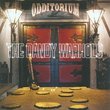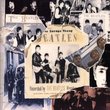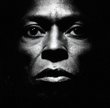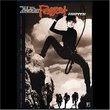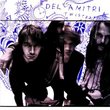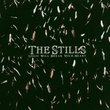| All Artists: Southern Death Cult Title: Southern Death Cult Members Wishing: 3 Total Copies: 0 Label: Beggars UK - Ada Release Date: 7/23/1996 Genres: Alternative Rock, Pop, Rock, Metal Style: Goth & Industrial Number of Discs: 1 SwapaCD Credits: 1 UPCs: 607618004620, 060761800462 |
Search - Southern Death Cult :: Southern Death Cult
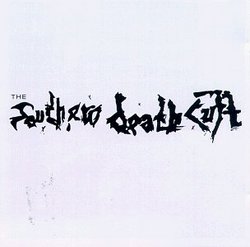 | Southern Death Cult Southern Death Cult Genres: Alternative Rock, Pop, Rock, Metal Featuring Ian Astbury (Cult, Holy Barbians), available for the first time domestically. 15 tracks including Fatman, the Girl, the Crypt, Apache, Moya, Flowers in the Forest, and others. |
Larger Image |
CD DetailsSynopsis
Album Details Featuring Ian Astbury (Cult, Holy Barbians), available for the first time domestically. 15 tracks including Fatman, the Girl, the Crypt, Apache, Moya, Flowers in the Forest, and others. Similarly Requested CDs
|
CD ReviewsOne of the few truly gothic albums A. J. Griffin | 07/18/2008 (5 out of 5 stars) "Not counting Christian Death and Death in June (or Diamanda Galas, for that matter), this album is one of the few truly "gothic" albums to be realeased in the late 70s/early 80s. I would disagree with an earlier review that "The Crypt" is a throw-away song. In fact, it's one of the stand-outs on the album, mixing a heavy, menacing bass with an ambient sound accentuated by piano. It makes its point, truly gothic. For those who had this album on LP, know that the CD provides a few extra tracks, can't remember which, but they're good, maybe four of them. This CD is only fairly recently available on US domestic issue. To let you know - the live (guess they might be BBC?) tracks are not so great, I always used to skip over them and truth be known those tracks are why I don't listen to the album so much. But if you're into ealry-80s and late 70s English New Wave, you absolutely must own this record. It's one of a kind, and with its successor, Death Cult's "Ghost Dance", provides a great idiosyncratic duo that can't be beat. Catch the Native American references also." Classic Goth Rock album Matt | Beyond the Tanarian Hills... Pennsylvania. | 04/17/2007 (5 out of 5 stars) "What can be said about the Southern Death Cult? Only that they helped lay the way for the goth and deathrock bands to come. This album is a compilation of their recorded material over the short lifespan that they held. Its full of raw goth punk heart as well as dark and political lyrics. This album is a favorite of mine because I can listen to the whole thing without skipping songs, though I do favor a few over the rest: The Girl - Pounding tom drums and a springing, growling bass line make this track a stand out for me. Its almost reminicent of New Orleans even though I've never been there. My favorite. The Crypt - Morbid and still full of energy, this song should be on the gothic compilations. The piano addition to this song gives it that eerie graveyard feel. Ians wild laughs and yelps sure help as well. Vivisection [live] - If a crowd of goths and deathrockers were to ever start a circle pit, it would be to this song. Pure unrestrained goth punk with a slight surf rock feel. Cliff-hanger dragouts between verse and chorus lines will keep you energized. I recomend this album to anyone who has heard their name, but has procrastinated in buying the album. Thats what I did and I felt bad for doing so. Any fan of goth or deathrock will find something to love in the Southern Death Cult." Shades of things to come. Michael Stack | North Chelmsford, MA USA | 04/10/2006 (2 out of 5 stars) "The Southern Death Cult was one of the old British post-punk/goth bands of the late '70s and early '80s, these days best remembered for being the launching pad for the Cult. And honestly, that's probably the way they're best remembered.
The band was a quartet led by vocalist Ian Astbury. Even at this early stage, Astbury's aggressive and powerful vocals were quite apparent, he dominates every moment he's at the microphone, but unlike the Cult with Billy Duffy's guitar to offer foil for Astbury, there's nothing in the Southern Death Cult to match him. Instead, Astbury sits on top of a background reminiscent of early work by the Cure and Joy Division. The band's total released output was one 12" single, this is presented along with some radio sessions, a few live tracks and some unreleased studio material. Taking on the 12" first-- the three tracks all feature pretty much the same pattern, goth-styled cleantone guitars are the order of the day, with Astbury's undeniable presence on top of it all. But at its best, the music is somewhat dull even if Astbury is inspired ("The Fatman") and at its worse, Astbury seems unsure of himself and doesn't really know where to go (the other two tracks). The two radio show pieces are pretty much more of the same-- ranging between dull goth ("Flowers in the Forest") or totally lacking whenever Astbury doesn't sing ("All Glory"). The exception is "Apache", which is somewhat more driven and excitable and while musically it doesn't rise much above the band's cleantone-guitar-goth formula, it's among the better of the pieces in that sound and Astbury's vocal is superb (it also points towards the future). The additional studio sessions are a bit of a mixed bag-- "The Crypt" is a total disaster-- a bizarre shouted backing vocal totally mangles the piece, but both "Moya" and the other recording of "The Fatman" are vast improvements-- setting up atmosphere and mood far better then anything else on the record does, but Astbury's vocals, while definitely the highlight of the pieces, still lack confidence. In direct opposition to all of this is the three live tracks-- they've got a more punk edge to them, overdriven, feedback soaked guitars dominate the pieces (well, as much as any guitar performance dominates these tracks) and Astbury seems to feed off the live energy, his trademark shouts and quips find their way in ("Faith"). Invariably, it's really more a curiosity than anything else-- the performances aren't horrible, it's all just a bit boring compared to both what would rise from the band's ashes and its contemporaries." |



